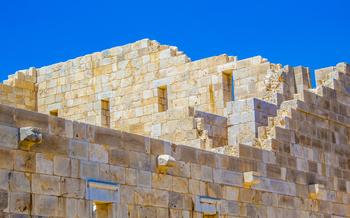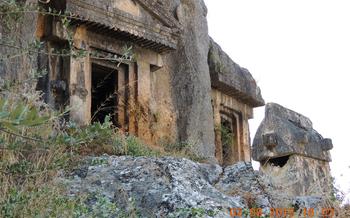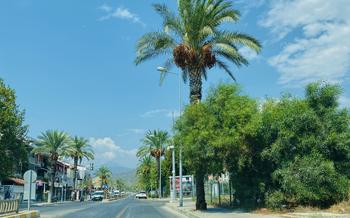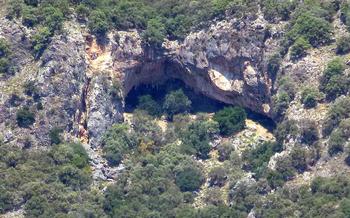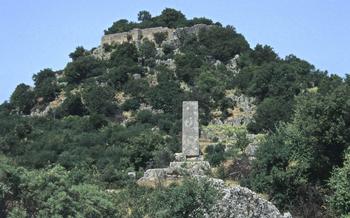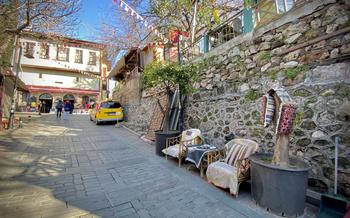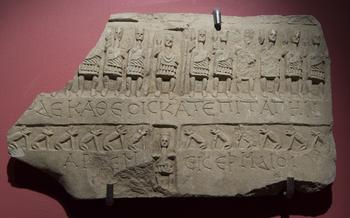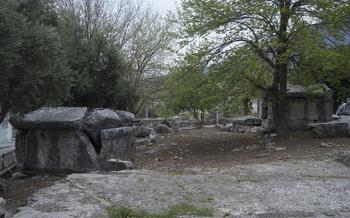
Rhodiapolis Ancient City
- The Antiquity of Rhodiapolis
- Exploration of the Ruins
- The Amphitheater
- Temple of Apollo
- The Agora: A Center of Trade and Social Life
- City Walls and Gates:
- Rock Tombs and Necropolis
- The Lycian Way
- The Museum: A Portal to Rhodiapolis's Past
- Local Cuisine
- Accommodation Options
- Transportation and Accessibility
- Visiting Hours and Fees
- Photography Opportunities:
The Antiquity of Rhodiapolis
Rhodiapolis, an ancient city steeped in history, invites travelers to delve into the captivating era of the Lycian civilization. Founded in the 4th century BC, this city flourished as a vibrant port and trading center, connecting diverse cultures across the Mediterranean. Archaeological excavations have unearthed a treasure trove of artifacts, shedding light on the city's rich past. From the imposing theater to the sacred Temple of Apollo, Rhodiapolis stands as a testament to the ingenuity and artistry of its ancient inhabitants. Discover the secrets of this bygone era as you wander amidst the ruins, immersing yourself in the grandeur of a civilization that once thrived on these shores.
Exploration of the Ruins
As you delve deeper into the ruins of Rhodiapolis, you will encounter a remarkable array of structures and monuments that speak to the city's rich history. The theater, a testament to the city's cultural significance, stands as a grand reminder of ancient performances. Its well-preserved seating arrangements and impressive acoustics offer a glimpse into the vibrant entertainment that once filled this space.
Among the ruins, you will find the agora, the bustling marketplace and gathering place of Rhodiapolis. Here, you can envision the lively atmosphere as merchants displayed their wares, shoppers haggled for the best prices, and citizens exchanged news and ideas. The architectural features of the agora, such as colonnades and shops, provide a glimpse into the commercial and social life of the city.
The city's fortifications, including its imposing city walls and gates, reveal Rhodiapolis's strategic importance. These defensive structures, constructed with precision and resilience, protected the city from potential threats. The gates, carefully positioned and fortified, served as crucial entry points, allowing for the regulation of movement and trade.
As you explore the ruins, keep an eye out for inscriptions, sculptures, and artifacts that have been unearthed during archaeological excavations. These discoveries provide valuable insights into the lives, beliefs, and artistic expressions of the people who once inhabited Rhodiapolis.
The Amphitheater
The grand amphitheater of Rhodiapolis stands as a testament to the city's cultural and entertainment heritage. Its impressive size and architectural features make it a highlight of any visit to the ancient city.
With a seating capacity estimated to hold over 3,000 spectators, the theater's grandeur is immediately apparent. The well-preserved tiers of seats rise steeply from the stage, providing excellent views of the performances below. The stage itself is adorned with intricate carvings and sculptures, hinting at the elaborate productions that once graced this stage.
The acoustics of the theater are remarkable, allowing performers' voices to carry effortlessly throughout the auditorium. This feature, combined with the theater's intimate atmosphere, creates a truly immersive experience for visitors.
In ancient times, the amphitheater played host to a variety of performances, including plays, concerts, and gladiatorial contests. Today, it serves as a venue for cultural events and performances, allowing visitors to experience the theater's timeless allure firsthand.
Temple of Apollo
The Temple of Apollo stands as a testament to the deep religious and cultural significance of the god Apollo in Rhodiapolis. Built in the 2nd century AD, the temple's architectural style reflects the grandeur and sophistication of the Roman Empire. Its well-preserved facade features intricate carvings and decorative elements, showcasing the artistic prowess of the ancient Rhodians.
Inside the temple complex, excavations have revealed a treasure trove of artifacts and inscriptions, shedding light on the religious practices and beliefs of the city's inhabitants. From votive offerings to statues of Apollo, these discoveries provide valuable insights into the rituals and ceremonies that took place within the temple's sacred walls.
The Temple of Apollo served as a central hub for religious gatherings, where devotees would come to worship, seek guidance, and offer sacrifices. Its imposing presence and rich history make it a must-visit site for anyone seeking to delve into the spiritual and cultural heritage of Rhodiapolis.
The Agora: A Center of Trade and Social Life
At the heart of Rhodiapolis, the agora served as a bustling marketplace and a central gathering place for the city's inhabitants. Its architectural grandeur and functional design reflected the importance of commerce and social interaction in ancient times. The agora was a rectangular open space, surrounded by colonnaded stoas that provided shelter from the sun and rain. Within these stoas, merchants set up their shops and stalls, selling a variety of goods, from fresh produce and textiles to pottery and jewelry. The agora was not just a place of commerce but also a center for social and political activities. Public meetings, debates, and religious ceremonies were often held here, fostering a sense of community and civic engagement among the citizens of Rhodiapolis.
City Walls and Gates:
Rhodiapolis was surrounded by an impressive system of defensive walls, a testament to the strategic importance of the city. Built with local stone, these towering ramparts protected its inhabitants from potential invaders. The walls feature sturdy construction techniques, employing interlocking blocks and skillfully designed towers. Several gates, strategically placed along the fortifications, allowed controlled access to the city. These gateways served not only to regulate movement but also to enhance security, with their fortified structures and intricate locking mechanisms. Today, the well-preserved sections of the city walls and gates offer a glimpse into the defensive measures employed by the ancient city of Rhodiapolis.
Rock Tombs and Necropolis
The Lycian Tradition of Rock-Cut Tombs
The Lycians, the ancient inhabitants of the region, were renowned for their rock-cut tombs, a tradition that dates back to the 5th century BC. These tombs, carved into the cliffs surrounding Rhodiapolis, are a testament to the Lycian culture and craftsmanship. The tombs feature elaborate facades adorned with intricate carvings, inscriptions, and bas-reliefs depicting scenes from mythology and daily life. These tombs offer a glimpse into the beliefs and practices of the Lycian civilization.
Exploring the Necropolis
The necropolis, or cemetery, of Rhodiapolis is located just outside the city walls and contains a vast collection of rock-cut tombs. Visitors can wander through the necropolis, marveling at the diverse array of tombs, each with its unique design and carvings. The tombs range in size and complexity, from simple niches to elaborate structures with multiple chambers and columns. The inscriptions on the tombs provide valuable insights into the lives and identities of the deceased, revealing their names, professions, and family relationships.
Cultural Significance
The necropolis of Rhodiapolis is not merely a collection of tombs; it is a cultural and historical treasure trove. The tombs offer a window into the funerary practices and beliefs of the Lycians. They reveal the importance of family and lineage, as well as the Lycians' reverence for their ancestors. The necropolis also provides insights into the social structure and hierarchy of Rhodiapolis, as the tombs vary in size and ornamentation depending on the status of the deceased.
Panoramic Views
The necropolis is situated on a hilltop, offering breathtaking panoramic views of the surrounding landscape. Visitors can take in the stunning vistas of the Mediterranean Sea, the Taurus Mountains, and the lush green valleys that characterize the region. The combination of ancient tombs and natural beauty creates a truly awe-inspiring experience for visitors to Rhodiapolis.
The Lycian Way
The Lycian Way, an extensive hiking trail, traverses the ancient Lycian lands, including Rhodiapolis. This 509-kilometer-long trail offers a mesmerizing journey through diverse landscapes, connecting ancient cities, stunning coastlines, and remote villages.
Rhodiapolis serves as an ideal stop-over point on the Lycian Way, inviting hikers to explore its ruins and immerse themselves in the region's rich history. Several trails and routes crisscross the city, allowing hikers to customize their experience.
Passing through Rhodiapolis, the Lycian Way takes hikers along scenic paths that reveal breathtaking panoramic views. The surrounding mountains, forests, and coastline create a mesmerizing backdrop for a memorable hiking adventure.
The Museum: A Portal to Rhodiapolis's Past
Within the confines of Rhodiapolis, a treasure trove of artifacts awaits discovery at the on-site museum. This repository of the city's rich history houses an eclectic collection of pottery, coins, sculptures, and inscriptions, each whispering tales of a bygone era. As you wander through the museum's galleries, you will encounter exquisite ceramics adorned with intricate patterns, unearthed from the ruins of Rhodiapolis's homes and workshops. These vessels, once used for everyday tasks or adorned as decorative pieces, offer a glimpse into the daily lives of the city's inhabitants.
Among the museum's prized possessions are a remarkable collection of coins that span various periods of Rhodiapolis's existence. These metallic discs, minted with the city's emblem or the likeness of its rulers, provide valuable insights into the city's economy and trade relations. The museum's numismatic collection is a testament to Rhodiapolis's significance as a commercial hub in ancient times.
In addition to pottery and coins, the museum showcases an array of sculptures and inscriptions that shed light on the city's artistic and cultural heritage. From finely carved statues of gods and goddesses to intricate friezes depicting scenes from mythology, these artworks offer a glimpse into the religious beliefs and artistic sensibilities of Rhodiapolis's people. Inscriptions, etched on stone tablets or fragments of pottery, provide valuable historical information, including details about the city's administration, laws, and religious practices.
The Rhodiapolis Museum stands as a guardian of the city's memory, preserving and interpreting its rich history for generations to come. Through its collection of artifacts and educational exhibits, the museum invites visitors to delve into the captivating story of Rhodiapolis, a city that once flourished on the shores of the Mediterranean, leaving an indelible mark on the tapestry of history.
Local Cuisine
Fethiye offers a delightful culinary journey influenced by the Mediterranean and Turkish traditions. Indulge in traditional Turkish dishes bursting with flavors and aromas. Experience the local specialties, such as freshly caught seafood, succulent grilled meats, and tantalizing meze platters.
Discover authentic restaurants and cafes nestled in the heart of Fethiye, where you can savor the flavors of traditional Turkish cuisine. Enjoy the vibrant atmosphere as you dine in local eateries, immersing yourself in the culinary culture of the region.
Don't miss the opportunity to try the region's famous gözleme, a flatbread filled with savory ingredients like spinach, cheese, or minced meat. Delight in the freshness of salads made with local produce, accompanied by the tangy flavors of homemade dressings.
For a true culinary experience, participate in cooking classes offered in Fethiye. Learn the secrets of Turkish cuisine from local experts, discovering the art of preparing traditional dishes using fresh, seasonal ingredients. Take home new skills and recipes to recreate the flavors of Fethiye in your own kitchen.
Accommodation Options
Fethiye offers a diverse range of accommodation options to suit every traveler's preference and budget. For those seeking a luxurious stay, the city boasts a selection of upscale hotels with stunning views of the Mediterranean Sea. These hotels offer world-class amenities, including private balconies, swimming pools, and gourmet restaurants.
For a more budget-friendly option, there are numerous guesthouses and hostels within easy reach of Rhodiapolis. These accommodations provide a comfortable and affordable place to rest and recharge after a day of exploring the ancient ruins. Many guesthouses offer shared dorm rooms, while others have private rooms with en-suite bathrooms.
For those who prefer the privacy and independence of a vacation rental, there are several apartments, villas, and holiday homes available in Fethiye. These rentals provide a home-away-from-home experience, allowing travelers to cook their own meals and enjoy the flexibility of having their own space.
No matter your budget or preferences, you'll find a range of accommodation options in Fethiye that will make your stay comfortable and enjoyable.
Transportation and Accessibility
Getting to Rhodiapolis from Fethiye and nearby cities is relatively straightforward. Public transportation options include buses and minibuses, which depart regularly from Fethiye's main bus terminal. The journey takes approximately 45 minutes to an hour, depending on traffic. Alternatively, you can opt for a more scenic route by taking a boat trip from Fethiye harbor to the ancient city. Several tour operators offer organized excursions, which typically include transportation, guided tours, and lunch.
If you prefer the flexibility of exploring at your own pace, renting a car or hiring a taxi is a viable option. Numerous car rental agencies are located in Fethiye, and the drive to Rhodiapolis takes about 30 minutes. Taxis are readily available, but it's advisable to agree on a fare before your journey. Ample parking space is available near the entrance of the ancient city.
Visiting Hours and Fees
Rhodiapolis is open to visitors year-round, with varying hours depending on the season. During the summer months (April-October), the site is open from 8 am to 7 pm, while in the winter months (November-March), the hours are from 8 am to 5 pm. Admission fees are charged at the entrance, and guided tours are available for a more in-depth exploration of the ancient city.
To make the most of your visit, plan your trip during the shoulder seasons (spring and autumn) when the weather is pleasant, and the crowds are smaller. Guided tours are highly recommended, as they provide valuable insights into the history, architecture, and significance of Rhodiapolis. For photography enthusiasts, the golden hours of sunrise and sunset offer magical lighting conditions for capturing stunning shots of the ruins against the backdrop of the Mediterranean Sea.
Photography Opportunities:
Rhodiapolis offers a feast for the eyes, making it a paradise for photographers. The ancient ruins, with their intricate details and weathered textures, provide a captivating backdrop for your shots. Capture the grandeur of the theater, with its rows of stone seats rising towards the sky. Focus on the intricate carvings and sculptures adorning the temple facades, telling stories of ancient gods and heroes.
Venture beyond the main ruins to discover hidden corners and picturesque vistas. The surrounding landscape, with its rolling hills and lush greenery, creates a stunning frame for your photographs. Climb to the top of the acropolis for breathtaking panoramic views that stretch to the sparkling Mediterranean Sea.
Remember to play with different angles and lighting conditions to capture the essence of Rhodiapolis at different times of the day. The golden hues of dawn and dusk cast a magical glow on the ruins, while the midday sun highlights the intricate details of the architecture.
Share your stunning captures with the world on social media, using hashtags like #Rhodiapolis, #AncientRuins, and #TurkeyTravel. Your photographs will not only showcase the beauty of this ancient city but also inspire others to embark on their own journey of discovery.
